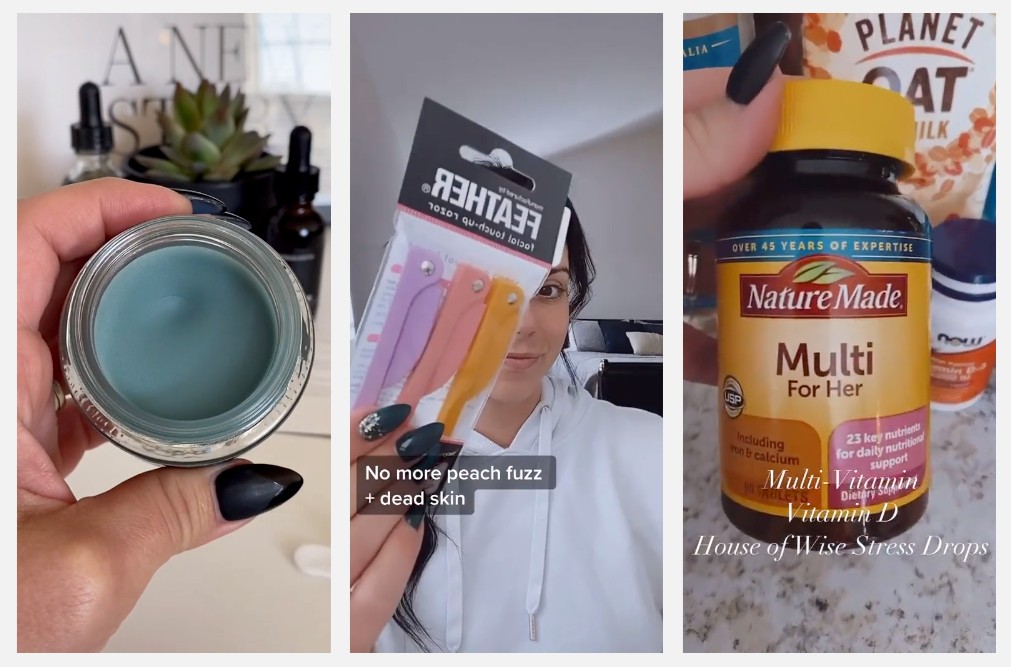This content originally appeared on March 31, 2022 in the Future of Marketing weekly email series. Subscribe here.
Welcome to the Future of Marketing.
Last week, we briefly discussed the creator economy – but do you know the different types of creators? Let’s get into it…
Tiers of Content Creation
User-Generated Content (UGC)
Content created by people about a brand, such as testimonials, videos, and photos about their experience with a brand.
 Why it works: Ninety-three percent (93%) of people trust people more than brands – especially if their experience is real and authentic (i.e. they’re not being paid to promote the brand).
Why it works: Ninety-three percent (93%) of people trust people more than brands – especially if their experience is real and authentic (i.e. they’re not being paid to promote the brand).
Employee-Generated Content (EGC)
Content created by employees about their company – like a post about their new job, a project they’re working on, a Glassdoor review, or behind-the-scenes footage.
 Why it works: More than half (52%) of communications and HR teams regularly use employee-generated content (EGC) across brand marketing channels. When employees share content about the company they work for, it shows potential talent what the culture is like – and it builds trust with customers and potential buyers. Happy employees = happy customers.
Why it works: More than half (52%) of communications and HR teams regularly use employee-generated content (EGC) across brand marketing channels. When employees share content about the company they work for, it shows potential talent what the culture is like – and it builds trust with customers and potential buyers. Happy employees = happy customers.
Influencer-Generated Content (IGC)
Content created by – you guessed it – influencers. But what separates influencers from the rest? Spoiler: Influencers typically promote brands through paid partnerships, and they have a strong community and an engaged audience (regardless of the influencer’s follower count).
 Why it works: Working with influencers – from celebrities to micro-influencers – is a great way to reach an existing and engaged audience your brand may not already have access to.
Why it works: Working with influencers – from celebrities to micro-influencers – is a great way to reach an existing and engaged audience your brand may not already have access to.
Work with influencers to create UGC by launching a giveaway or contest that encourages people to tag your brand. For example, an influencer can ask their followers to “tag Chipotle and describe your favorite order” or “tag H&M with your best Spring outfit.”
Faux UGC
Brands pay seasoned creators to review products and create UGC-like content, but here’s the real kicker: they don’t necessarily have to have an audience (unlike influencers). They’re purely creating content that looks like UGC.
 Why this works: Sometimes, brands don’t have a strong-enough community or strategy to generate raw UGC. Other times, fans simply need guidance regarding what type of content brands want to see – and faux UGC can help teach fans what content a brand wants to re-share. In fact, 60% of consumers wish that more brands would tell their fans and customers what type of content they want them to create.
Why this works: Sometimes, brands don’t have a strong-enough community or strategy to generate raw UGC. Other times, fans simply need guidance regarding what type of content brands want to see – and faux UGC can help teach fans what content a brand wants to re-share. In fact, 60% of consumers wish that more brands would tell their fans and customers what type of content they want them to create.
Brand-Created Content
Content that brands produce and re-share – think infographics, polls, company updates, and blogs.
 Why it works: You want your brand to be top of mind once people need what you’re selling. Branded content helps build brand recognition, and creates an experience that adds value to your audience’s understanding of your brand and the products/services it provides.
Why it works: You want your brand to be top of mind once people need what you’re selling. Branded content helps build brand recognition, and creates an experience that adds value to your audience’s understanding of your brand and the products/services it provides.
Our Take…
There is no right or wrong answer. Experiment and diversify your content so you can evaluate what truly moves the needle. There is no one-size-fits-all when it comes to marketing because every brand is different.
What we’re learning:
- Top Influencer Marketing Trends for 2022
- The Rise of the Creator Economy
- What Instagram’s Chronological Feed Means for Brands and Creators
- TikTok Adds New GIF ‘Library’ Option to Facilitate New Creative Elements
- Twitter ‘Collabs’ Feature Could Make it Possible for Users to Co-author Tweets
Thanks for reading this far. If there’s ever a marketing topic you want us to cover, slide into our DMs and we’ll take care of the rest. Until next time!
